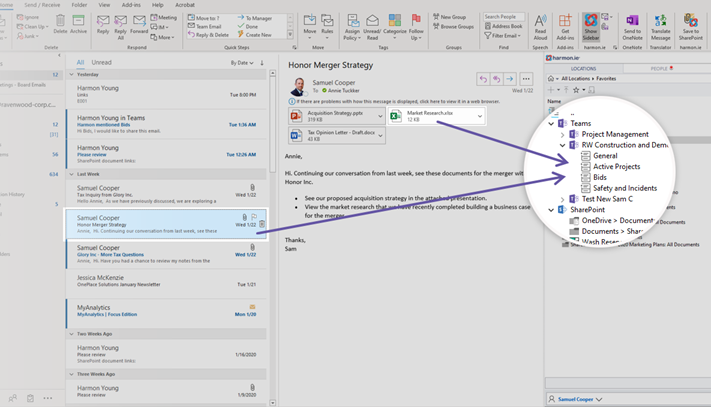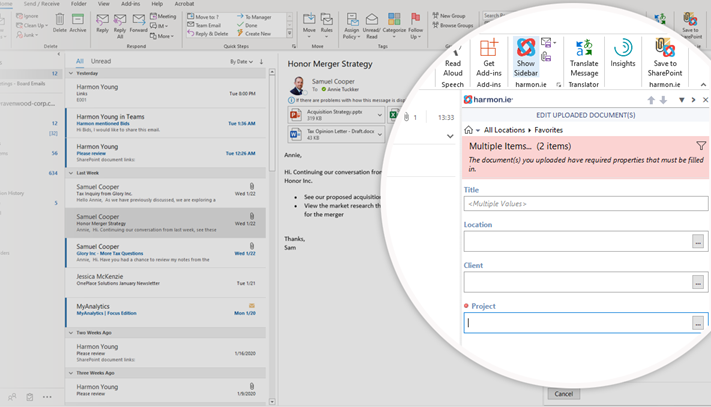In earlier blog posts, we looked at the needs of remote workers to be self-sufficient when working at home, and the challenges present when using Microsoft Teams, SharePoint, and Outlook to help people get their work done from home. In this post, we look at practical tips for overcoming these challenges. The most important things to keep in mind when trying to work from home are the following:
- People still live in Outlook – it’s their comfort zone and it is the only practical way to communicate with external parties.
- You can’t find important emails and documents if you and your colleagues don’t save them in a centralized location and classify them according to agreed upon and accepted methodologies.
- Whatever you do, remember that people don’t like changing behavior or conforming to new business processes.
Let’s look at each of these, in turn:
Recognize that Email is (Still) Your Comfort Zone
Regardless of how much you use Microsoft Teams to exchange information with colleagues, you are almost certainly using email to communicate with external parties like customers, suppliers, and partners. That’s because email is the only medium where all communicating parties retain a full transcript of the interaction. For example, when you send a proposal to a customer, both you and the customer retain a copy of the proposal and all accompanying text. On the other hand, when you use Teams, only one party retains a copy of the discussion. Proper IT governance requires that each party retain a copy of important discussions. Email is the only game in town that does this.
In our recent Strategies for Remote Working with Microsoft Teams webinar, the audience was polled for how many people still use email. A whopping 96% answered in the affirmative. Not only is email still going strong, its use is actually rising, as was shown via survey results presented during the webinar.
Capture and Classify
Of course, video meetings, chat, and email aren’t the only ways to communicate. Lots of corporate communications involve the exchange and sharing of important documents like proposals, contracts, and project plans. When you are working alone at home, it is tempting to store everything on a local drive and have it handy. But that would be a mistake resulting in document chaos, as conflicting and competing versions of proposal, contracts, and project plans crisscross between colleagues and external partners.
No, the right thing to do is to store documents centrally using SharePoint or Teams and to classify them using metadata so colleagues can find them easily.
But that is easier said than done, as we all know. People shun metadata because it adds steps to storing documents. The result? Even when documents are stored in Teams or SharePoint, they are impossible to find.
So, it’s critical to make it easy for people to both capture and classify information. And that is where harmon.ie comes in. harmon.ie makes it easy to drag and drop emails and document attachments from Outlook directly to Teams or SharePoint, as shown in the figure below.

It then prompts users for metadata so they don’t have to take that extra step, as shown in the figure below.

And finally, harmon.ie suggests to post the email and attachment to an existing Teams conversation and to add explanatory text, so your colleagues get the proper context, as shown in the figure below.

Search
The final stage of being self-sufficient at home is being able to find information quickly. Once your emails and documents have been correctly captured and classified, finding them is a snap. harmon.ie makes it easy to search for data directly from the worker’s comfort zone – Outlook. Using SharePoint Search, people can look for emails and documents using text or metadata search, directly from Outlook. It doesn’t get any easier than this.
Wrapping Up
The bottom line is that people at home need to be self-sufficient. harmon.ie helps them be productive using Teams and SharePoint by enabling them to take advantage of all the great Microsoft features, while spending their day in Outlook, where they already spend their worktime.

